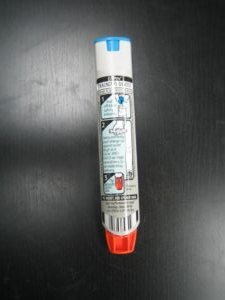Insect sting allergy involves a hypersensitivity reaction to the venom of stinging insects. As a result, some individuals end up with a reaction after stung by insects such as the following:
- Fire ants
- Bees
- Wasps
- Hornets
- Yellow jackets
Most individuals are not allergic to an insect sting and might mistake a normal or localized reaction as an allergic reaction. It is vital that you know the difference to avoid unnecessary worry and trips to the doctor’s clinic or even to the emergency room.
Types of reactions

Always bear in mind that the severity of an insect sting tends to vary from one individual to another. There are 3 types of reactions that have distinct characteristics that you should be familiar with.
- Normal reaction causes swelling, pain and reddening of the area surrounding the sting site.
- A large localized reaction causes swelling that radiates beyond the sting area. Even though it appears alarming, it eventually resolves on its own and will not progress to a whole body reaction.
- An allergic reaction is the most serious type of reaction that entails immediate medical care.
Symptoms of insect sting allergy
The symptoms of a severe allergic reaction or anaphylaxis can include one or several of the following:
- Development of hives which are itchy, reddened rashes that spreads to the area adjacent the sting site
- Difficulty with breathing
- Swollen face, mouth tissue or throat
- Rapid heart rate
- Wheezing or difficulty swallowing
- Anxiety and restlessness
- Dizziness or loss of consciousness caused by the rapid drop in the blood pressure
Even if the severe allergic reactions are considered uncommon, there are cases which progressed to shock, cardiac arrest and loss of consciousness for 10 minutes or less. This reaction can develop within minutes after being stung and can be fatal. It is vital to seek immediate medical attention.
As for mild insect sting allergy, it can cause one or more of the following at the sting area:
- Redness, itchiness and pain
- Mild to moderate swelling
- Spots similar to pimples in appearance
- Warmth at the sting site
Managing a normal or localized reaction
- When an individual is stung on the hand, remove any jewelry right away. Check the area since some insects might leave behind a venom sac and stinger in the skin. In case the sac is still in the skin, scrape gently with a credit card.
- Cleanse the sting site using water and soap and dab on an antiseptic.
- Apply hydrocortisone cream to soothe the site and wrap with a sterile dry bandage.
- If inflammation is present, place an ice pack on the area.
- An oral antihistamine can be taken to minimize the swelling, itching and hives. Aspirin or other pain medications can be given to relieve the pain.
Managing an allergic reaction to an insect sting
If an individual experiences an allergic reaction, it is treated with an injectable epinephrine. Upon administration, the development of severe reaction can be halted. In some cases, oxygen, intravenous fluids and other treatments might be needed.
